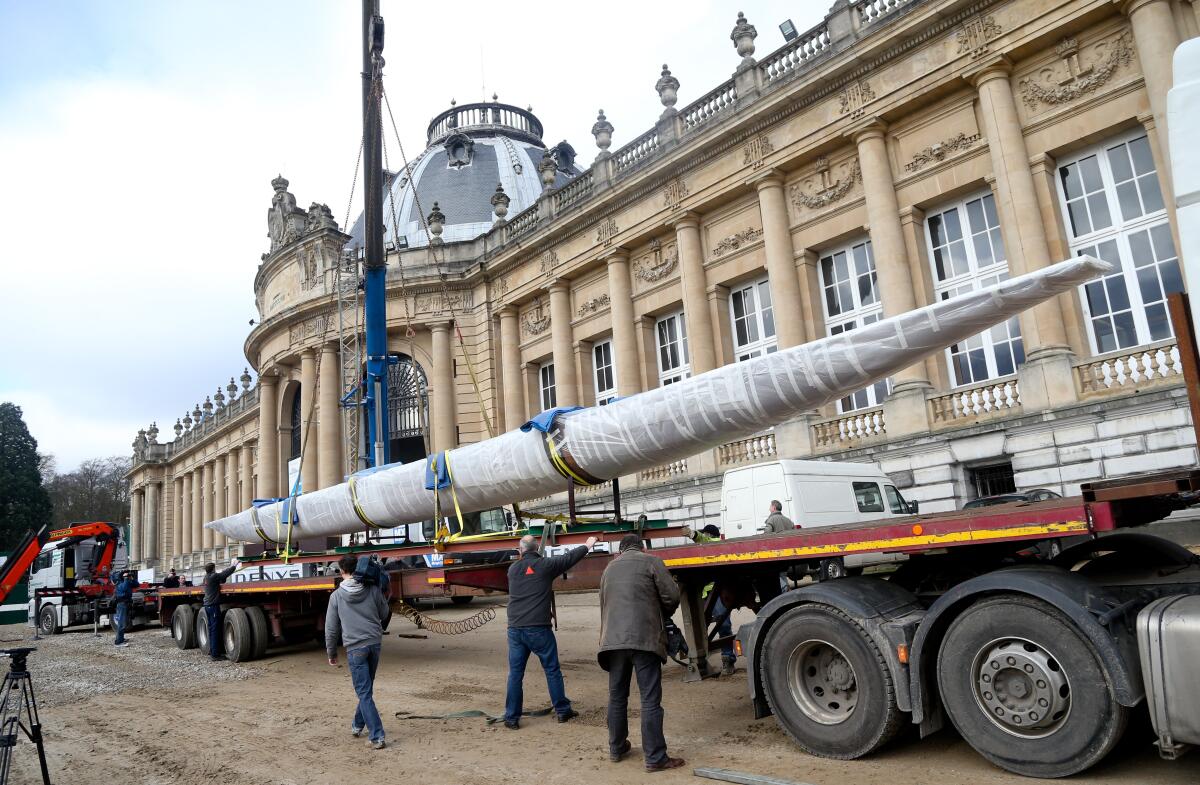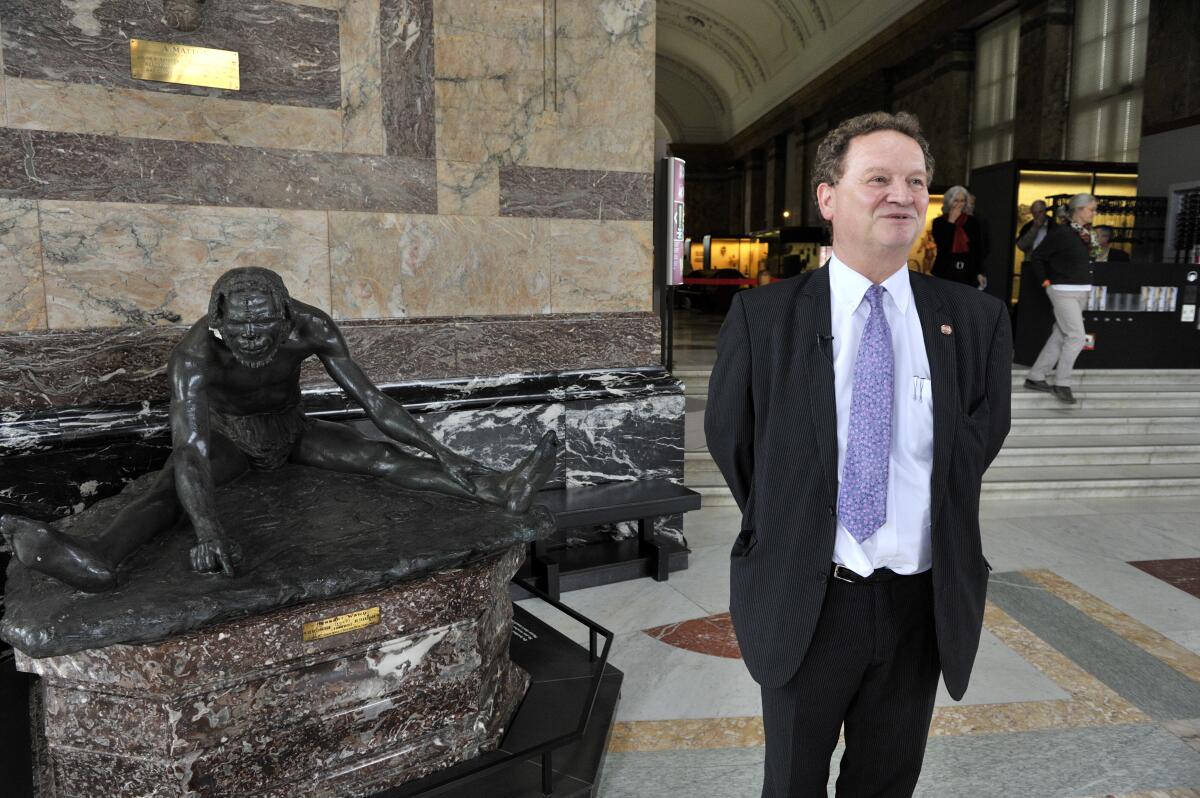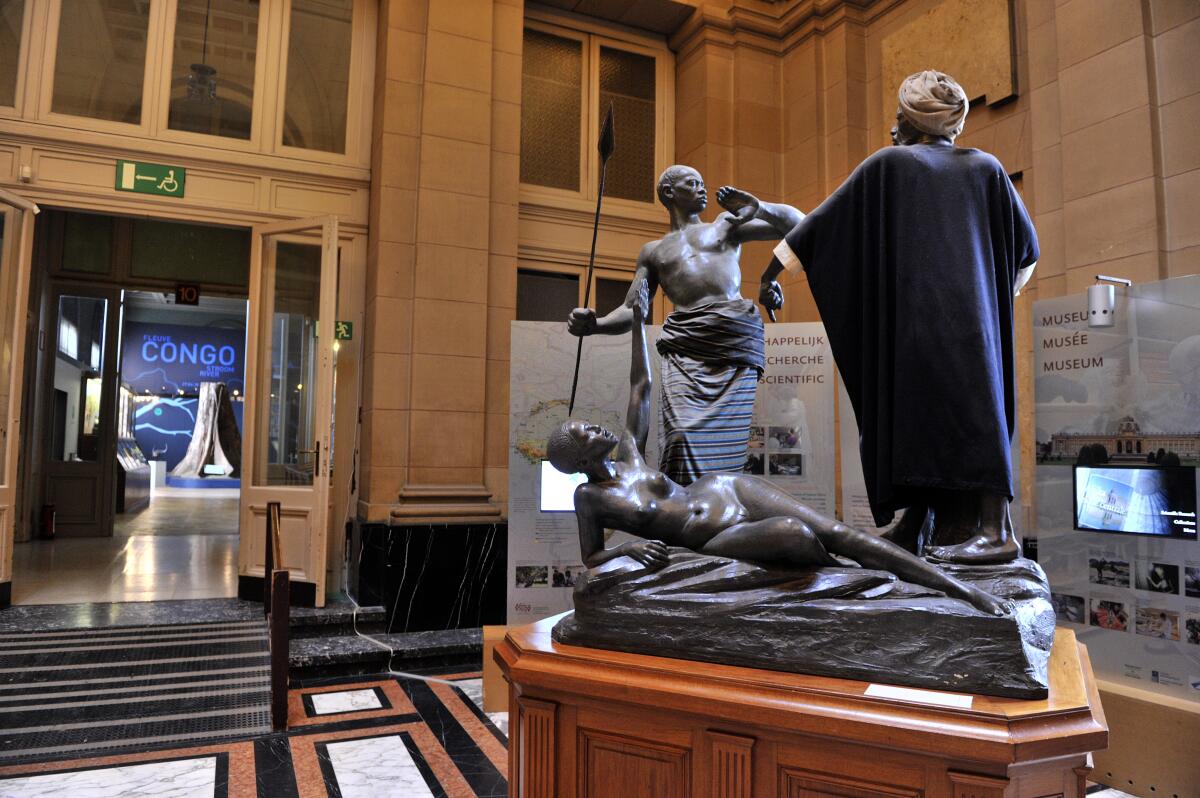Belgium confronts ugly colonial past, but African museum changes don’t please everyone

- Share via
BRUSSELS — The Royal Museum for Central Africa opened here in 1897 to celebrate Belgium’s new colonial triumph — the creation of the Congo Free State by King Leopold II.
His reign over the million-square-mile swath was brutal. Estimates of the death toll from forced labor, disease and massacres run as high as 10 million.
That was not the message of the museum, whose exhibits over the years were largely propaganda committed to upholding a national delusion that Belgium had brought civilization to the region.
Engravings glorified the king and statues depicted the local people as primitive. In 1958, the museum put Congolese people on display as part of a human zoo.
The museum remained virtually unchanged until five years ago, when it shut down for a $73-million renovation aimed at giving visitors a fuller picture of Belgian colonialism.
“We were still showing the Belgium view of Africa before independence,” said the museum director, Guido Gryseels.

The project is part of a larger national reckoning, as Belgium slowly acknowledges the exploitation and human suffering its rule wrought in what is now the Democratic Republic of Congo, Rwanda and Burundi.
But when the museum reopened last year, Aline Nyirahumure, who is from Rwanda and runs the African cultural center Kuumba in Brussels, was not impressed.
Much of the money went into a new building that includes auditoriums for educational events as well as a gift shop and restaurant.
Much else has barely changed. The “Crocodile Room,” a wood-paneled space reminiscent of a 19th century European world’s fair, features animal specimens preserved in jars and insect samples pinned to white boards.
The most contentious statues were placed in a side hall. But a large rotunda features a statue of a European missionary with an African boy.
The accompanying plaque reads: “Belgium brings civilization to the Congo.”

“For me, seeing the amount of money that they put into it, but to think that they didn’t actually change a lot, is a bit concerning,” Nyirahumure said.
“History is history,” she said. “But how do we represent that history today?”
The question is in some ways akin to debate in the United States over Civil War memorials and how to take stock of that era without appearing to celebrate certain figures or their policies.
Public discussion about the Belgian colonial regime took off two decades ago with the publication of “King Leopold’s Ghost” by Adam Hochschild and “The Assassination of Lumumba” by Ludo de Witte, books that shed light on the extent of its atrocities.
Now members of the African diaspora such as Nyirahumure are leading an effort to correct historical memory.
Many want to overhaul the history curriculum in schools, rename streets and squares and remove statues of King Leopold II from public spaces.
Mireille-Tsheusi Robert, the Congolese-born founder of Muntu-Kemit Committee, an African Belgian cultural group, said she and other activists aim to educate the Belgian public about colonial history through books, workshops and conferences.
“We’re not waiting for the politicians, for the government,” Robert said. “We are telling everyone what happened.”
They have had some successes. Last year, Brussels renamed a city square to honor the Democratic Republic of Congo’s first prime minister, Patrice Lumumba, who was assassinated in 1961 under the direction of Belgium authorities. In April, Belgium’s prime minister apologized for the kidnapping of thousands of mixed-race children, known as métis, during colonial rule.
But activists also point to the way things haven’t changed.
A United Nations working group that visited the country in February blamed racism still prevalent there today in part on “the lack of recognition of the true scope of the violence and injustice of colonization.”
In August, the town of Ath came under fire for its annual festival, which includes a character called the “savage” — a man in blackface wearing a headdress.
The same month, attendees at an “Afrohouse” party held at the Royal Museum wore blackface and leopard print costumes. Gryseels said the party organizers were not affiliated with the museum, which has since changed its policy on who can rent out space.
He defended the renovation, saying he consulted members of the diaspora to reframe the museum’s narrative without denying its polemic history.
“We are are not an activist” organization, he said. “We are a scientific institute. We see ourselves as a forum for debate.”
But Gryseels said changing public perception about Belgian’s colonial history will take time. Denouncing the colonial regime was long taboo — and still is for many people.
“It’s a very emotional debate. There’s not a single family that did not have relatives in the Congo,” he said. “All of us grew up in school with the message that we did nothing but good in the Congo.”
Nyirahumure and other activists have called on the museum to return its African artifacts, echoing similar discussions in Britain, Germany and France, where President Emmanuel Macron has advocated for the repatriation of African artwork held in French museums.
Gryseels said he would be open to discussing repatriation of works if the Democratic Republic of Congo formally requested it.
On a recent afternoon at the museum, crowds milled through the exhibits, watching videos of Congolese men and women explaining local customs in the newer displays and examining pieces of pottery, necklaces and colorful fabrics in the older ones.
Some of the notable changes to the museum are not immediately obvious.
The rotunda now contains a large wooden sculpture of a man’s head, created by a Congolese artist. A music room provides children with instruments from Central Africa, and a Congolese teacher gives lessons.
One exterior wall has long been inscribed with the names of about 1,600 Belgian colonists who died in Congo. Now when the sun shines, the wall is hit with the shadows of names of seven Congolese men killed in colonial times.
And in a nod to the the controversial cultural and political questions surrounding the renovation, a new mural was installed.
It shows modern-day Africans dragging a controversial statue from the museum, while white men try to block their efforts.
Bernhard is a special correspondent.
More to Read
Sign up for Essential California
The most important California stories and recommendations in your inbox every morning.
You may occasionally receive promotional content from the Los Angeles Times.










